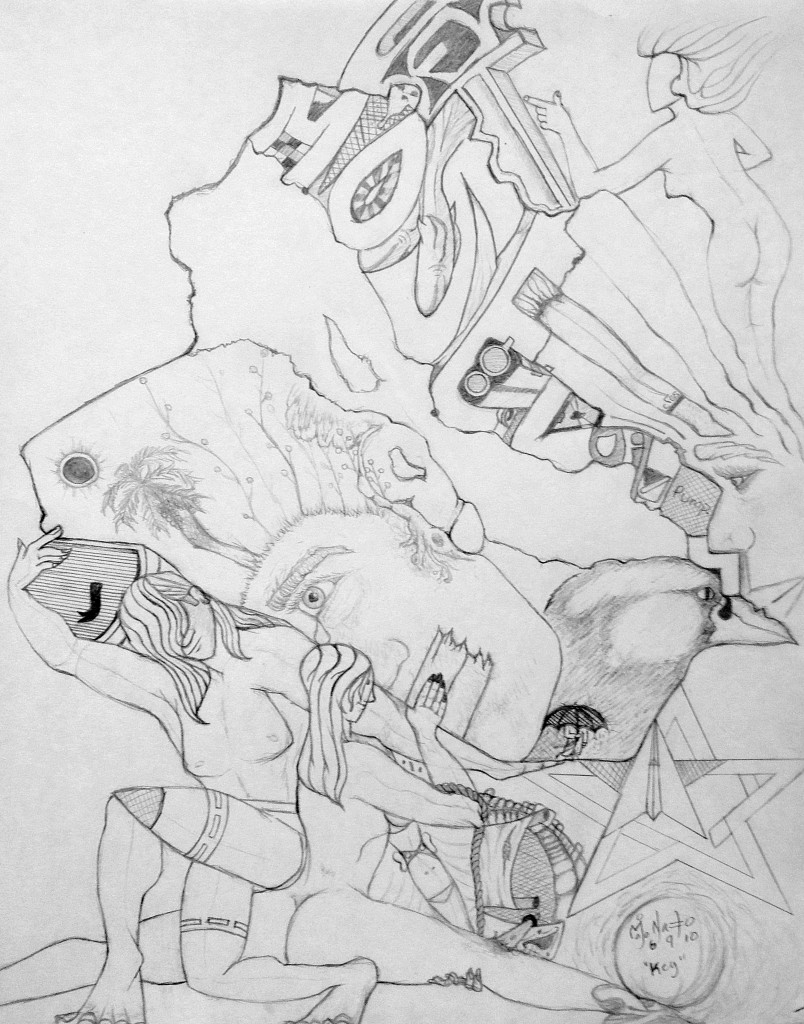Interactive Drawing – “Key”
New Logo for The Gate of God . com
Frosted Plastic Business Cards
Tribute to M.C. Escher the Artist.
College work I created as a tribute to M.C. Escher.
BIOGRAPHY:
Maurits Cornelis Escher Dutch: (17 June 1898 – 27 March 1972), usually referred to as M. C. Escher, was a Dutch graphic artist. He is known for his often mathematically inspired woodcuts, lithographs, and mezzotints. These feature impossible constructions, explorations of infinity, architecture, and tessellations.
Escher’s first print of an impossible reality was Still Life and Street, 1937. His artistic expression was created from images in his mind, rather than directly from observations and travels to other countries. Well known examples of his work include Drawing Hands, a work in which two hands are shown, each drawing the other; Sky and Water, in which light plays on shadow to morph the water background behind fish figures into bird figures on a sky background; and Ascending and Descending, in which lines of people ascend and descend stairs in an infinite loop, on a construction which is impossible to build and possible to draw only by taking advantage of quirks of perception and perspective.
He worked primarily in the media of lithographs and woodcuts, though the few mezzotints he made are considered to be masterpieces of the technique. In his graphic art, he portrayed mathematical relationships among shapes, figures and space. Additionally, he explored interlocking figures using black and white to enhance different dimensions. Integrated into his prints were mirror images of cones, spheres, cubes, rings and spirals. Escher was left-handed.
In 1941, Escher summarized his findings in a sketchbook, which he labeled Regelmatige vlakverdeling in asymmetrische congruente veelhoeken (“Regular division of the plane with asymmetric congruent polygons”). His intention in writing this was to aid himself in integrating mathematics into art. Escher is considered a research mathematician of his time because of his documentation with this paper, in which he studied color based division, and developed a system of categorizing combinations of shape, color and symmetrical properties.
Overall, his early love of Roman and Italian landscapes and of nature led to his interest in the concept of regular division of a plane, which he applied in over 150 colored works. Other mathematical principles evidenced in his works include the superposition of a hyperbolic plane on a fixed 2-dimensional plane, and the incorporation of three-dimensional objects such as spheres, columns and cubes into his works. For example, in a print called “Reptiles“, he combined two and three-dimensional images. In one of his papers, Escher emphasized the importance of dimensionality and described himself as “irritated” by flat shapes: “I make them come out of the plane.”
Biography Source Link : http://en.wikipedia.org/wiki/M._C._Escher











